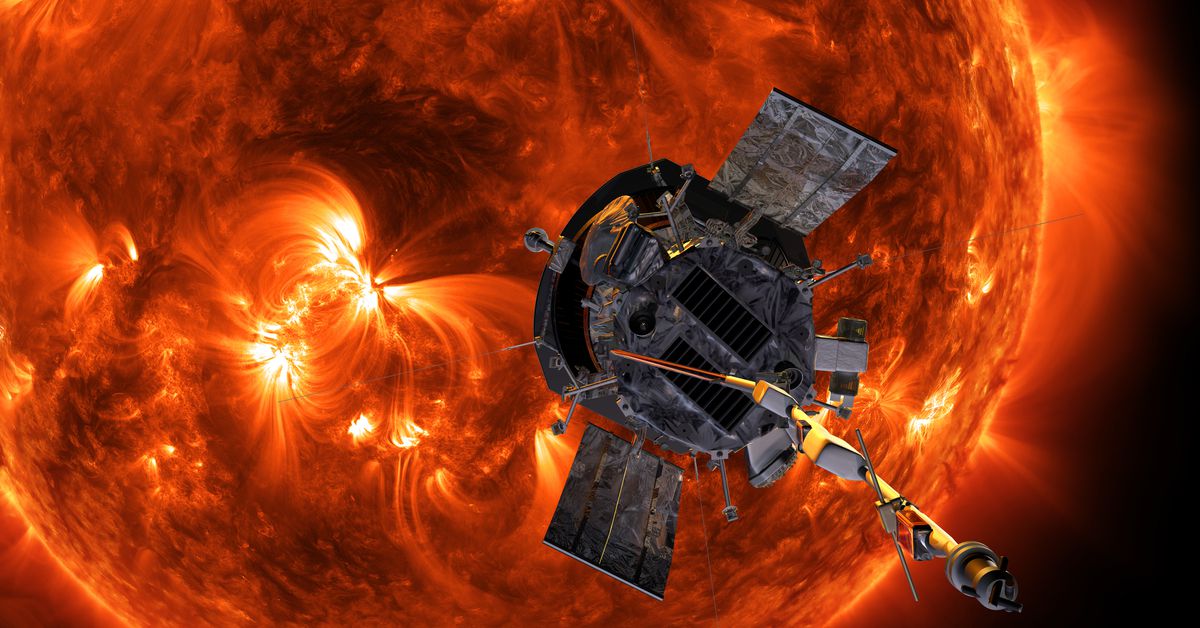NASA’s Parker Solar Probe Dares to Go Where No Human-Made Object Has Gone Before
The Closest Flyby Ever: A Milestone in Space Exploration
On December 26th, NASA’s Parker Solar Probe transmitted a signal back to Earth, indicating that it had survived its record-breaking close flyby of the Sun. The probe, launched by NASA and Johns Hopkins Applied Physics Laboratory in 2018, had ventured just 3.8 million miles from the surface of the Sun – a feat that marks the closest human-made object has ever gotten to our star.
A Mission Years in the Making
The Parker Solar Probe’s journey began on December 20th, when it set off on its mission to explore the corona, the atmosphere surrounding the Sun. The probe is equipped with a state-of-the-art heat shield that can withstand temperatures of up to 2,500 degrees Fahrenheit (1,371°C), while the probe itself remains a relatively cool 85 degrees Fahrenheit (29°C). This remarkable design allows the Parker Solar Probe to study the corona in unprecedented detail.
The Closest Approach: A Heart-Stopping Moment
On December 24th, the Parker Solar Probe flew past the solar surface at a blistering speed of 430,000 miles per hour (692,000 km/h). Mission operations were out of contact with the probe during this time, as it navigated through the scorching hot corona. The close flyby was designed to help scientists better understand the Sun’s heat and the acceleration of energetic particles to near light speed.
Understanding Solar Wind: A Key to Unlocking the Mysteries of the Universe
The Parker Solar Probe is equipped with a suite of advanced instruments that will enable it to collect detailed data on the solar wind, a stream of charged particles emitted by the Sun. By studying the solar wind, scientists hope to gain a deeper understanding of the fundamental forces that shape our universe.
A Glimpse into the Corona: Unraveling the Secrets of the Solar Atmosphere
The corona is a mysterious region of space that has long fascinated scientists. While its temperature can reach as high as 3 million degrees Fahrenheit (1.6 million°C), it remains relatively invisible to us on Earth. The Parker Solar Probe’s close flyby will provide scientists with unprecedented insights into this enigmatic realm.
The Success of the Mission: A Testament to Human Ingenuity
The successful completion of the Parker Solar Probe’s close flyby is a testament to human ingenuity and our unrelenting pursuit of knowledge. This mission marks a major milestone in space exploration, one that will pave the way for future research into the mysteries of the Sun.
What’s Next: A New Era of Solar Research
Now that NASA has confirmation of the mission’s success, it expects the Parker Solar Probe to send detailed telemetry data on its status on January 1st. This information will provide scientists with a wealth of new insights into the solar wind and the corona. As we move forward in this new era of solar research, one thing is clear: the Parker Solar Probe has opened doors to new discoveries that will forever change our understanding of the universe.
The Legacy of the Parker Solar Probe: A New Frontier in Space Exploration
As we celebrate the success of the Parker Solar Probe’s close flyby, it’s worth remembering the significance of this mission. The probe’s journey marks a major milestone in human space exploration, one that will inspire generations to come. As we venture further into the unknown, the Parker Solar Probe stands as a shining example of what can be achieved through scientific collaboration and determination.
In Conclusion
The Parker Solar Probe’s close flyby of the Sun is a momentous occasion that marks the beginning of a new era in solar research. With its cutting-edge design and sophisticated instruments, this remarkable spacecraft has opened doors to new discoveries that will forever change our understanding of the universe. As we look to the future, one thing is clear: the Parker Solar Probe has dared to go where no human-made object has gone before, paving the way for a new frontier in space exploration.











